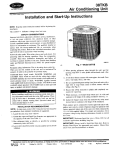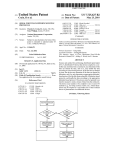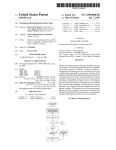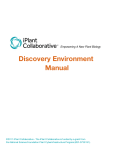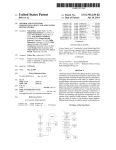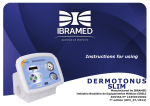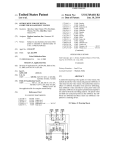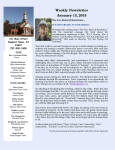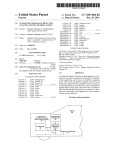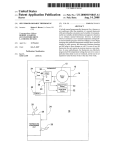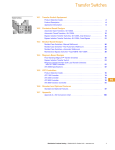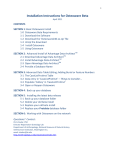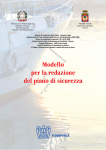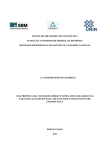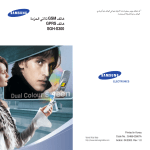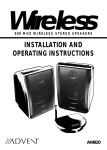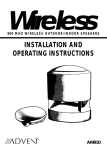Download (12) United States Patent (10) Patent N0.: US 8,458,384 B2
Transcript
US008458384B2 (12) United States Patent (10) Patent N0.: Johnson et al. US 8,458,384 B2 (45) Date of Patent: (54) AUTOMATICALLY LAUNCHINGA Iglil?illgawatll et al~ MEASUREMENT APPLICATION IN RESPONSE TO MEASUREMENT DEVICE CONNECTION , i , , 6,412,028 6,430,000 6,470,399 6,561,428 B1 B1 B1 B2 (75) Inventors: Brian M. Johnson, Austin, TX (US); - - * - . goyletetlai van e a . 710/15 ..................... .. 2/2007 Ousley et a1. James G- Smlth, Cedar Park, TX (Us); Michael C. J agen, Cedar Park, TX (US); 7,636,799 B2 7,805,720 B2 12/2009 Yang et a1. 9/2010 Chang et a1. . 2005/0055690 A1* 2006/0047465 A1* 2008/0195768 A1* . 2008/0244619 A1* A551gnee: National Instruments Corporation, Austln, TX (U S) _ _ Notlce: et Steed et al. Rent Tasler Meier et al. 7,184,922 B2 . (*) 1 6/2002 8/2002 10/2002 5/2003 DaV‘d E“ W‘ls_°n’ Ausnn’ TX (Us); Reid K. H. Lee, Cedar Park, TX (US); Stefanie E Buyer, Austin, TX (Us) (73) Jun. 4, 2013 _ _ 3/2005 Cornillon et a1. ........... .. 717/174 3/2006 Ousley et a1. .... .. 702/127 8/2008 Lowe et a1. 710/14 10/2008 Jeon et a1. 7/2009 Wang et al‘ 2011/0010470 A1* 1/2011 Hulbert et a1. ................ .. 710/13 _ 710/8 OTHER PUBLICATIONS Subject to any dlsclalmer, the term of this _ patent is extended or adjusted under 35 _ .ZIIIZIOSOGZIIIOUI, USB 2.0: Not a M1nute Too Soon, PCMAG.c0m, Feb. U'S'C' 15403) by 123 days' Alfred Poor, Does SCSI Have aFuture?, PCMAG.c0m, Aug. 1, 2001. _ DL1620/DL1640/DL1640L Digital Oscilloscope User’s Manual (21) Appl' NO" 12/699’133 (3rd Edition) (Feb. 2003) (“Yokogawa Manual”). (22) * Cited by examiner Filed: 719/321 2009/0193152 A1 * Feb. 3, 2010 (65) Prior Publication Data Primary Examiner * Henry Tsai Assistant Examiner * Titus Wong Us 2011/0191509 A1 (51) (52) Int CL G06F 13/38 G06M 11/04 Aug' 4’ 2011 (74) Attorney, Agent, or Firm * Meyertons Hood Kivlin Kowert & Goetzel, P.C.; Jeffrey C. Hood; Joel L. Stevens (57) ABSTRACT Automatically launching a measurement program in response (2006.01) (200601) U-s- C1- to measurement device connection. The measurement device . . . . . . . . . . . . . . . . . . . . . . . . . . . . . . . . . . . . . . . . . . . .. (58) may be connected to Field of Classi?cation Search a host device_ The measurement device may store a measurement program. The host device may USPC .......................................................... .. 710/62 automatically detect the measurement device, However, a See application ?le for complete search history. measurement device speci?c driver may not be required for References Clted ment device. The host device may automatically execute the communication between the host device and the measure (56) measurement program stored on the measurement device in US. PATENT DOCUMENTS 5,987,530 6,067,584 6,073,205 6,282,710 A A A B1 11/1999 5/2000 6/2000 8/2001 response to the connecting. During execution, the measure ment device may acquire data and provide the acquired data Thomson Hayles et a1. Thomson Boehler to the host device. 23 Claims, 7 Drawing Sheets connect measurement device to computer system 532 i the computer system detects the measurement device 512.4. i the computer system automatically executes a measurement program stored on the measurement device M i the measurement device generates measurement data the measurement device provides the measurement data to the computer system m US. Patent Jun. 4, 2013 Sheet 1 0f7 US 8,458,384 B2 f 100 150 measurement device “ // Q computer system FIG. 1 US. Patent 100 f Jun. 4, 2013 Sheet 2 0f7 US 8,458,384 B2 \ \\ scoymputemr 175x U US. Patent Jun. 4, 2013 EmSw EmS EmS ESQ g US 8,458,384 B2 Sheet 3 0f 7 QE2% <2F QE2% 2Q: Q29.6E328g .QIm \\20@:5n6g8 8mE.S3“m%E F mm mB c:o ow“ES E29:ng | £4 US. Patent Jun. 4, 2013 Sheet 4 0f 7 connect measurement device to computer system M V the computer system detects the measurement device M V the computer system automatically executes a measurement program stored on the measurement device M V the measurement device generates measurement data M V the measurement device provides the measurement data to the computer system M FIG. 4 US 8,458,384 B2 US. Patent Jun. 4, 2013 Sheet 5 0f 7 NE Q\\\ \\\\\\\\\\\\ US 8,458,384 B2 US. Patent Jun. 4, 2013 Sheet 6 0f 7 Rnmg?axg?ixI . 3Q58B.Z62Qi; .QIMm US 8,458,384 B2 US. Patent Jun. 4, 2013 US 8,458,384 B2 Sheet 7 0f 7 Om.QI WI W 9% ,H E.8, n .£53,928“ NEami D w US 8,458,384 B2 1 2 AUTOMATICALLY LAUNCHING A MEASUREMENT APPLICATION IN RESPONSE TO MEASUREMENT DEVICE CONNECTION USB driver to communicate with the measurement device. In some embodiments, the measurement device may be con?g ured to appear as a CD to the host device. For example, the measurement device may be con?gured to appear as a CD ROM device with a CD loaded into the CD ROM device to the FIELD OF THE INVENTION host device. Additionally, the measurement program may be con?gured to appear as an autorun program of the CD. Accordingly, the host device may automatically execute The present invention relates to the ?eld of measurement, and more particularly to a system and method for automati the measurement program stored on the measurement device cally launching a measurement program in response to mea surement device connection. in response to the connection and detection. During execution of the measurement program, the mea DESCRIPTION OF THE RELATED ART data to the host device, e.g., based on user input to the mea surement device may acquire data and provide the acquired surement program. However, in further embodiments, the measurement program may be con?gured to acquire the data Scientists and engineers often use test, measurement, or automation systems to perform a variety of functions, includ automatically, e.g., without the user speci?cally providing input to acquire the data. ing measurement of a physical phenomenon or unit under test (UUT), test and analysis of physical phenomena, simulation, hardware-in-the-loop testing, process monitoring and con trol, control of mechanical or electrical machinery, data log BRIEF DESCRIPTION OF THE DRAWINGS 20 ging, and laboratory research, to name a few examples. The A better understanding of the present invention can be devices that interact with the physical systems under analysis obtained when the following detailed description of the pre ferred embodiment is considered in conjunction with the may be collectively referred to as “measurement devices”. Measurement devices are often used in conjunction with following drawings, in which: computer systems. The computer system receives measure ment data from the measurement device and performs much of the processing, analysis, or control for the application. Some con?guration is usually necessary to make the mea surement device work together correctly with the computer system. For example, many measurement devices require speci?c drivers to be installed on the computer system to enable communication with the measurement device. However, scientists and engineers are often not highly trained in the art of computer system con?guration. Installing 25 the measurement device and associated drivers on the com 35 invention; FIG. 2 illustrates a measurement system according to one embodiment of the invention; 30 the necessary drivers for the measurement device are some times not readily available (e.g., when the measurement 40 Another disadvantage associated with the traditional approach of requiring speci?c drivers for measurement devices is the cost of developing the drivers. Measurement device vendors may have to develop and test drivers for mul FIG. 3 is a block diagram of an exemplary measurement device, according to one embodiment; FIG. 4 is a ?owchart diagram illustrating one embodiment puter system can be a dif?cult and time-consuming task. Also, device is moved to a location in the ?eld and the driver installation CD becomes lost or damaged), which can result in downtime of the measurement system. FIG. 1 illustrates a computer system coupled to a measure ment device according to an embodiment of the present 45 of a method for automatically launching a measurement pro gram in response to measurement device connection; and FIGS. 5A-5C are exemplary screen shots corresponding to an embodiment of the method of FIG. 4. While the invention is susceptible to various modi?cations and alternative forms, speci?c embodiments thereof are shown by way of example in the drawings and are herein described in detail. It should be understood, however, that the drawings and detailed description thereto are not intended to limit the invention to the particular form disclosed, but on the contrary, the intention is to cover all modi?cations, equiva lents and alternatives falling within the spirit and scope of the present invention as de?ned by the appended claims. tiple operating systems and may also have to maintain the DETAILED DESCRIPTION OF THE INVENTION drivers or develop new ones as the operating systems evolve. Improvements in the con?guration and installation of mea Incorporation by Reference surement devices are therefore desirable. 50 The following references are hereby incorporated by ref SUMMARY OF THE INVENTION erence in their entirety as though fully and completely set forth herein: US. Pat. No. 7,184,922 titled “Measurement Device that Various embodiments are presented of a system and method for automatically launching a measurement program in response to measurement device connection. The measure 55 ment device may store a measurement program. The mea surement device may be con?gured to connect to a host device. The ho st device may automatically detect the measurement device and may initiate a driver to communicate with the measurement device. However, a measurement device spe application: 60 Memory MediumiAny of various types of memory devices or storage devices. The term “memory medium” is ci?c driver may not be required for communication between the host device and the measurement device. Instead, the host intended to include an installation medium, e. g., a CD-ROM, device may use a generic driver to communicate with the measurement device. For example, the measurement device may be a universal serial bus (USB) device and the host device may use a built in (e.g., built in to the operating system) Appears as a USB Mass Storage Device,” issued on Feb. 2, 2007. Terms The following is a glossary of terms used in the present 65 ?oppy disks, or tape device; a computer system memory or random access memory such as DRAM, DDR RAM, SRAM, EDO RAM, Rambus RAM, etc.; or a non-volatile memory such as a magnetic media, e. g., a hard drive, or optical storage. The memory medium may comprise other types of memory US 8,458,384 B2 3 4 as well, or combinations thereof. In addition, the memory medium may be located in a ?rst computer in which the programs are executed, and/or may be located in a second different computer which connects to the ?rst computer over a network, such as the Internet. In the latter instance, the One speci?c example of live measurement data is data that represents a continuous waveform. FIGS. 1 and 2iComputer System Coupled to a Measure ment Device FIG. 1 illustrates a computer system 100 operable to second computer may provide program instructions to the ?rst computer for execution. The term “memory medium” execute a program that performs a measurement function. This program is also referred to herein as a “measurement may include two or more memory mediums which may reside program”. As shown, a measurement device 150 may be coupled to the computer system 100. The measurement device 150 may perform any of various types of measure ments. For example, as shown in FIG. 2, the measurement device 150 may receive a signal from a physical system or unit under test 175 and may generate measurement data based in different locations, e.g., in different computers that are connected over a network. Carrier Mediumia memory medium as described above, as well as a physical transmission medium, such as a bus, network, and/or other physical transmission medium that conveys signals such as electrical, electromagnetic, or digital on the signal. However, according to various embodiments, signals. 20 the measurement device 150 may generate measurement data based on any of various kinds of signals received from any of various kinds of physical systems or units under test 175. As described below, the measurement device 150 may store the measurement program. As also described below, the computer system 100 may automatically execute the mea surement program in response to being connected and/or coupled to the measurement device 150. The measurement program executing on the computer sys 25 tem 100 may receive the measurement data generated by the Computer Systemiany of various types of computing or processing systems, including a personal computer system (PC), mainframe computer system, workstation, network appliance, Internet appliance, personal digital assistant (PDA), television system, grid computing system, or other device or combinations of devices. In general, the term “com puter system” can be broadly de?ned to encompass any device (or combination of devices) having at least one pro cessor that executes instructions from a memory medium. Measurement Deviceiincludes instruments, data acqui sition devices, smart sensors, and any of various types of devices that are con?gured to acquire and/or store data. A measurement device may also optionally be further con?g ured to analyze or process the acquired or stored data. Examples of a measurement device include an instrument, measurement device 150 and may utilize the measurement data to perform the measurement function. The measurement data may be utilized to perform any of various kinds of measurement functions, such as test and/or analysis of the 30 in-the-loop testing, process monitoring and control, control of mechanical or electrical machinery, data logging, labora tory research, etc. such as a traditional stand-alone “box” instrument, a com puter-based instrument (instrument on a card) or external instrument, a data acquisition card, a device external to a computer that operates similarly to a data acquisition card, a physical system or unit under test 175, simulation, hardware smart sensor, one or more DAQ or measurement cards or The measurement data may be provided from the measure ment device 150 to the computer system 100 by any of various methods. For example, in one embodiment, when executing modules in a chassis, an image acquisition device, such as an the measurement program, raw data (e.g., live measurement image acquisition (or machine vision) card (also called a data) may be provided from the measurement device 150 to the computer system 100. Alternatively, the measurement 35 video capture board) or smart camera, a motion control device, a robot having machine vision, and other similar types of devices. Exemplary “stand-alone” instruments include 40 oscilloscopes, multimeters, signal analyzers, arbitrary wave form generators, spectroscopes, and similar measurement, test, or automation instruments. A measurement device may be further con?gured to per form control functions, e.g., in response to analysis of the acquired or stored data. For example, the measurement device 45 ?les comprising binary values representing the measurement 50 form automation functions, i.e., may receive and analyze data, and issue automation control signals in response. Measurement Dataidata generated by a measurement device. For example, the measurement device may receive a signal from a unit under test or a physical system and may generate measurement data based on the signal. The measure ment device may be coupled to another device, e.g., a com sheet applications, where the spreadsheet ?les include the measurement data; HTML, XML, or other markup language 55 where data values are generated in a live or streaming manner. ?les that include the measurement data; a ?le representing a graph, where the graph visually indicates the measurement 60 data; an executable program ?le that utilizes the measurement data; etc. These ?les may also include elements other than the measurement data. For example, an HTML ?le generated by the measurement device 150 may not only include the mea surement data but may also include text or graphic elements, e.g., as in a report ?le. Thus, in one embodiment the measure ment device 150 may differ from traditional measurement devices in that it not only generates the raw measurement data elements) generated in rapid succession by the measurement device. Examples of live measurement data include data that is generated in real time based on a physical signal, e.g., In another embodiment the ?les may be more structurally complex or may include elements other than the measure ment data. For example, the measurement device 150 may be operable to generate: spreadsheet ?les for particular spread puter system, that receives the measurement data generated by the measurement device. Live measurement dataimeasurement data that is gener ated continuously or quasi-continuously by a measurement device. For example, live measurement data may comprise a stream of data elements (e.g., ?oating point numbers or other prise ?les of any kind and may be structured in any desired way. In one embodiment the ?les may be simple ?les that simply represent the measurement data itself, e. g., as binary data values or human-readable text ?les indicating the mea surement data values. may send a control signal to an external system, such as a motion control system or to a sensor, in response to particular data. A measurement device may also be con?gured to per device 150 may be operable to generate one or more ?les based on the measurement data it generates or receives during execution of the measurement program. The ?les may com 65 but also applies a higher-level structuring and/or interpreta tion to the measurement data and generates a ?le based on the measurement data. US 8,458,384 B2 5 6 The measurement program executing on the computer sys tem 100 may receive the one or more ?les generated by the measurement device 150 and may read or analyze the ?les to perform the desired measurement function. The measure ment program may possess knowledge of what kind of ?les are generated by the measurement device 150 and may be operable to utilize these ?les accordingly, e. g., to obtain, process, display and/ or store the included measurement data. However, as described above, the computer system 100 may measurement program may be displayed on the display device of the computer system 100. The computer system 100 may also include a memory medium(s) on which programs or software components may be stored. For example, the memory medium may store the measurement program executed by the computer system 100. The memory medium may also store operating system software. For example, the operating system may provide support for automatically detecting and communicating with USB devices and/or CD receive raw measurement data from the measurement device ROM devices or other kinds of devices. In particular, the 150 rather than the described ?les. In various embodiments, the measurement device 150 may be coupled to the computer system 100 in any of various ways, and the computer system 100 may communicate with the measurement device 150 using any technique to receive the measurement data generated by the measurement device 150. According to one embodiment, the measurement device 150 may comprise a USB device coupled to a USB bus of the computer system 100. As used herein, the term USB is intended to include prior, current, and future versions of the operating system may include software, e.g., a driver, for communicating with USB Mass Storage devices or other ?le storage devices. Thus, in an embodiment in which the mea surement device 150 conforms to USB Mass Storage speci ?cations or other standard ?le storage device speci?cations, the measurement device 150 may advantageously be installed on the computer system 100 without requiring a special driver for the measurement device 150 to be installed. Additionally, the measurement device 150 may store the measurement 20 program, and the computer system 100 may automatically Universal Serial Bus (U SB) standard and similar standards. execute the measurement program in response to a connec In one embodiment, the measurement device 150 may appear to the computer system 100 as a USB device of a ?rst type, tion to the measurement device 150, as described below. e.g., as a USB CD ROM device which includes a CD. Accord ingly, the computer system 100 may not need to use a mea FIG. 3iMeasurement Device Block Diagram 25 surement device speci?c driver, but may instead use a built-in driver, e. g., for USB devices. Thus, the computer system 100 FIG. 3 is a block diagram representing one embodiment of the measurement device 150. It is noted that FIG. 3 represents an exemplary embodiment, and alternative architectures are contemplated. As shown, the measurement device 150 may may communicate with the measurement device 150 to obtain include a measurement acquisition unit 155. The measure the measurement data using a generic driver, without requir ment acquisition unit 155 may couple to a physical system or ing a measurement device speci?c driver to be installed. Note that while a driver is not required in the embodiments 30 described herein, the method may be easily modi?ed such that an installed driver may be used, e.g., one that is automati cally installed upon connection of the measurement device 150. unit under test 175 to receive signals (typically generated by transducers) and may generate measurement data based on the signals, as described above with reference to FIG. 2. 35 In various embodiments, the measurement acquisition unit 155 may comprise hardware of any kind, depending on the kind of measurement device 150, i.e., depending on the type of signal acquired and type of measurement data generated. In some embodiments, where ?les are generated by the measurement device 150, they may appear as ?les stored on a The measurement acquisition unit 155 may comprise a device CD. Alternatively, the measurement device may report itself of any kind or may conform to any of various instrumentation standards, such as a data acquisition device with associated as more than one device. For example, the measurement device 150 may report itself as a USB hub which has two devices connected, e.g., a CD which stores the measurement 40 associated image acquisition (or machine vision) hardware, program for automatic execution and another device which is usable for obtaining measurement data. In one embodiment, or a motion control device, to name a few examples. The measurement acquisition unit 155 may also be con?g the second device may be a storage device (such as a remov able hard drive) that stores the measurement ?les. Alterna tively, the second device may be a human interface device (HID) and the measurement program may be operable to use an HID layer to communicate with the measurement device 45 150 to obtain the measurement data. A measurement device speci?c driver may not be required for either of the devices described above. In another embodiment, the measurement device 150 may not appear to the computer system 100 as a CD but may appear as another type of ?le storage device, e. g., a ?le storage device that uses communication standards other than USE. signal conditioning circuitry, a GPIB instrument, a VXI instrument, a PXI instrument, a video device or camera with 50 ured to generate ?les based on the generated measurement data, as described above. In one embodiment, the measure ment device 150 may include a memory 160, and the gener ated ?les (shown as 170A-170N) may be stored in the memory 160. For example, FIG. 3 illustrates an embodiment in which various measurement data ?les 84 are stored in the memory 86. However, as indicated above, measurement ?les may not be generated and may be transferred to the computer system as raw measurement data, e.g., under the direction of the measurement program 165, which may be stored in the As used herein, a ?le storage device may comprise a device memory 160 and automatically executed by the computer system 100. that appears to a computer system as a device on which ?les can be stored and/or from which ?les can be received. For In one embodiment the measurement device 150 may also be operable to receive ?les from an external source, e. g., from some types of ?le storage devices, the computer system may be able to automatically detect connection of the ?le storage device to the computer system and may be operable to auto matically con?gure itself to communicate with the ?le stor age device, e.g., by using a standard ?le storage device driver provided by or built in to the operating system of the computer system. Referring again to FIGS. 1 and 2, the computer system 100 may include a display device. For example, a GUI of the 55 the computer system 100 described above. The ?les may be 60 stored in the memory 160. In one embodiment the measure ment device 150 may be con?gured via a con?guration ?le 172 stored in the memory 160. For example, a user or appli cation on the computer system 100 may create a con?guration 65 ?le 172 that includes various commands, settings, or attributes related to the con?guration of the measurement device 150. In response to the con?guration ?le 172 being sent from the computer 100 to the measurement device 150, US 8,458,384 B2 8 7 the measurement device 100 (e.g., the measurement acquisi In 404, in response to the measurement device being con nected, the computer system may detect the measurement device and initiate a query/response protocol with the mea tion unit 155) may be operable to analyze the con?guration ?le 172 and con?gure or control itself according to the com surement device to obtain information about the measure ment device. The measurement device may inform the com mands, settings, or attributes therein. In various embodiments the memory 160 may comprise a memory medium of any kind. In one embodiment the memory 160 may comprise ?ash memory. In other embodi ments the memory 160 may comprise any other type of puter system that it belongs to the USB “Mass Storage” device class, as well as providing other details that the com puter system 82 needs to know to communicate with the measurement device 80. memory suitable for storing ?les, such as RAM, magnetic media, etc. Accordingly, the computer system 100 may con?gure itself to communicate with the measurement device as a USB In one embodiment the measurement device 160 may be Mass Storage device. As described above, the computer sys engineered so that the memory 160 is detachable from the measurement device 150. Detaching the memory 86 may enable users to replace the memory 160 with another memory 160. This may provide various advantages to users. For example, in one embodiment the memory 160 may comprise a standard and commonly available memory component, such as a Compact FlashTM component, a Memory Stick® tem may execute an operating system that provides built-in support for USB devices, including USB Mass Storage devices. Thus, 404 may involve the computer system con?g uring itself to communicate with the measurement device using its standard driver for USB Mass Storage devices. This may be advantageous to the user in that he can easily and quickly set up the measurement device on any computer component, a Smart MediaTM component, an SDCard, a microdrive, a USB memory key, etc. The measurement device 150 may include a slot or compartment for inserting the standard memory component. Such standard memory com ponents are available in different sizes, e.g., 128 MB, 256 20 MB, 512 MB, 1 GB, 2 GB, 4 GB, 16 GB, etc. Different measurement applications may require different amounts of 25 the measurement device 150. In more detail, in one particular embodiment, the measure ment device may announce itself as a mass storage device embodiment, the measurement device may identify itself as a able media. From there, the OS class driver for mass storage 30 sectors to the contents of the memory medium of the mea 35 served from a memory medium other than a CD. Thus, the computer system may not be aware that ?rmware of the 40 measurement device is simply pretending to be a physical CD. In further embodiments, the measurement device may also storage device (e. g., and possibly also as an HID device). As shown in the embodiment of FIG. 3, the measurement device inform the computer system that it is another device, such as an HID. For example, the measurement device may report 45 itself as a USB hub which includes a mass storage device (e.g., a CD ROM device with an inserted CD) as well as another device, which may be used to interact with the mea port or hub of the computer system 100. In other embodi ments, the measurement device 150 may couple to the com puter system 100 in ways other than as a CD ROM device. FIG. 4iAutomatically Launching a Measurement Program surement device which contains an ISO-9660 like image. Since the layout of the image format is well-de?ned, the computer system may not “know” that the data is being appear as a CD ROM device or other standard type of ?le 150 may include a USB connector 152 by which the mea surement device 150 can connect to the computer system 100, e.g., via a cable connecting the USB connector 152 to a USB (on the computer system) may issue a plurality of CD-ROM speci?c commands that inquire about the capacity of the drive and which sectors represent data. Additionally, the computer system may query the measurement device for data from speci?c sectors of interest. The measurement device may map without memory and re-use a standard memory component already in his possession as the memory 160. As described above, in one embodiment, the measurement device 150 may couple to the computer system 100 and using SCSI-style commands (e.g., SCSI_INQUIRY). In one peripheral device type 0x05 (CD-ROM device) with remov memory, e.g., depending on factors such as the amount of measurement data generated, the rate at which the measure ment program consumes the measurement data, etc. Thus, if the memory 160 is a detachable and commonly available memory component then the user can purchase and attach a memory component of any appropriate size to the measure ment device 150. This may also lower the device vendor’s cost to produce the measurement device 150 and lower the user’ s cost to purchase the measurement device 150 since the user may be able to purchase the measurement device 150 system with an operating system that supports USB devices, without needing to possess or install specialized drivers for 50 surement features of the measurement device or to retrieve measurement data. Similar to the mass storage device described above, a driver may not be necessary for the second device. Based on Connection FIG. 4 illustrates a method for automatically launching a In 406, the computer system may automatically execute the measurement program in response to measurement device measurement program stored on the measurement device. As used herein, this “automatic execution” means that the user connection. The method shown in FIG. 4 may be used in conjunction with any of the computer systems or devices shown in the above Figures, among other devices. In various embodiments, some of the method elements shown may be performed concurrently, in a different order than shown, or may be omitted. For example, while the method of FIG. 4 is described with respect to USB devices, the method may be applied to classes of devices other than USB, e.g., ?rewire, or other communication protocols. Additional method elements may also be performed as desired. As shown, this method may operate as follows. In 402, the measurement device may be connected to the computer system. For example, the measurement device may be connected to a USB port or hub of the computer system. 55 does not speci?cally request execution of the measurement program. Instead, merely by connecting the measurement device, the measurement program is automatically executed, 60 without any user input requesting the speci?c execution of the program. However, it is noted that some operating systems may require con?rmation of the automatic execution. For example, some Microsoft Windows® operating systems may display a message box which requests that the user con?rm automatic execution of the measurement program, where the user can then con?rm the execution or cancel the execution of 65 the measurement program. However, it is noted that this con ?rmation is distinct from the user provided input to speci? cally execute the measurement program, e.g., by browsing to US 8,458,384 B2 10 the directory where the program is stored and then providing user input to execute that program (e.g., by double clicking the program icon). Thus, “automatic execution” may require second device for controlling the measurement device (e. g., the HID described above), and a third device for storing generated measurement data (e.g., a removable hard drive). a con?rmation of the execution, but does not require user The CD and the removable hard drive may map to a same memory medium of the measurement device or separate memory mediums, as desired. The measurement program may be operable to process the input to invoke or cause the initial execution of the measure ment program (e. g., such as double clicking the program icon, as mentioned above). In the embodiment described above, where the measure measurement data in any way, depending on the particular measurement application and the type of measurement data. For example, in one embodiment the measurement program ment device appears as a CD ROM device with an inserted CD, the “CD” may include an autorun.inf ?le in the root directory which identi?es the measurement program on the may analyze the measurement data (e.g., the data ?les) to obtain the measurement data, may display the measurement “CD”. Accordingly, the OS of the computer system (e.g., Windows®) may automatically execute the measurement matically executed in 406. However, it should be noted that data in a GUI on a display device of the computer system 82, may utilize the measurement data to perform tests of the physical system or unit under test 150, and/or may store the measurement data in persistent storage, to name a few the automatic execution may be initiated and/ or performed in any of a variety of methods other than the CD embodiment described above. Additionally, this automatic execution may examples. The measurement program may comprise any pro gram which accesses the measurement data ?le, possibly including a spreadsheet, an HTML browser, a text ?le editor/ program. Thus, by pretending to be a CD, the measurement device may store a measurement program that may be auto occur without requiring the user to install measurement 20 viewer, or any other program which accesses the measure ment data ?le. In one embodiment a standard program pro device speci?c drivers, thus saving the user typical installa tion and con?guration time. vided by the operating system of the computer system 82 may In 408, during the execution of the measurement program, the measurement device may generate measurement data, be used as the measurement program to access or view the measurement data ?le. e.g., based on one or more signals received from a physical 25 FIGS. 5A-5CiExemplary Screen Shots Corresponding to the Method of FIG. 4 system or unit under test. The measurement data may be generated based on the execution of the measurement pro gram. For example, the measurement program may receive user input to begin test of the unit under test (or perform whatever desired measurement procedure) and correspond ingly, the measurement device may begin acquiring and/or generating the measurement data. FIGS. 5A-5C provide exemplary screen shots correspond ing to the method of FIG. 4, after connection of the measure ment device to the computer system. As shown in FIG. 5A, 30 Similarly, following embodiments where the measurement device is detected as two distinct devices, the measurement device may also be detected as a human interface device is In one embodiment, the measurement program may inter act with the measurement device by using commands pro vided to the detected mass storage device, such as the CD. However, where the measurement device is also detected as another device, e. g., an HID, the measurement program may FIG. 5B. Thus, in the embodiment of FIG. 5, the measure 35 After completing enumeration and initial communication, FIG. 5C illustrates a measurement program that is automati cally executed after connection of the measurement device. 40 The measurement program has identi?ed that there is no thermocouple connected to the measurement device, and therefore, data is being acquired through the internal tempera 45 ture sensor. The user may also see the current reading and type, record device may provide the raw measurement data to the com puter system or may store the measurement data in measure ment data ?le(s) on the measurement device. As described above, the measurement data ?le may comprise a ?le of any kind, such as: a binary ?le comprising binary values repre data via the temperature logger, view a LabVIEW® example temperature logger, and “do more with your NI USB-TCOl ”. Thus, FIGS. 5A-5C provide exemplary screen shots corre 50 are envisioned, such as the numerous other embodiments particular spreadsheet application, where the spreadsheet ?le described herein, among others. Although the embodiments above have been described in includes the measurement data; an HTML, XML, or other 55 considerable detail, numerous variations and modi?cations will become apparent to those skilled in the art once the above disclosure is fully appreciated. It is intended that the follow ing claims be interpreted to embrace all such variations and gram ?le that utilizes the measurement data; etc. Where pro vided as ?les, the ?les may be provided on the mass storage device, e.g., on the “CD”. modi?cations. We claim: 1. A method of using a measurement device, comprising: detecting, by a host device, connection of the measurement device to the host device, wherein the measurement Alternatively, the ?les may be provided via another device, such as a second mass storage device (e.g., represented as a removable hard drive), in embodiments where the measure ment device is detected as more than one device. In even further embodiments, the measurement device may be repre sented as three devices, the mass storage device for launching the measurement program (e.g., the CD described above), a sponding to the method described above. Note that these are exemplary only and further modi?cations and embodiments senting the measurement data; a human-readable text ?le indicating the measurement data; a spreadsheet ?le for a markup language ?le that includes the measurement data; a ?le including a graph or image, where the graph or image visually indicates the measurement data; an executable pro As shown, the program is provided by National Instruments® and is for controlling a thermocouple measurement device. may control the measurement device, e.g., based on com mands received to the measurement program by the user. In 410, the measurement data may be provided to the computer system. As indicated above, the measurement ment device may be detected as a USB CD-ROM device (including a CD) and a USB HID. interact with the measurement device through that device. For example, in the case of an HID, the measurement program may provide commands to the measurement device via the HID layer of the OS. Accordingly, the measurement program the measurement device may be detected as a CD-ROM drive. device stores a measurement program, wherein a mea 65 surement device speci?c driver is not required for com munication between the host device and the measure ment device, wherein said detecting comprises detecting US 8,458,384 B2 11 12 12. The measurement device of claim 7, wherein the mea the measurement device as a plurality of devices, wherein the measurement device is con?gured to oper ate as the plurality of devices simultaneously, wherein a ?rst device of the plurality of devices appears to store the the host device automatically executing the measurement surement device comprises a universal serial bus (U SB) device. 13. A method of using a measurement device, comprising: the measurement device coupling to a host device; the measurement device identifying itself as a plurality of program stored on the measurement device in response devices to the host device, wherein a measurement to said detecting, wherein said automatically executing is performed without user input requesting execution of between the host device and the measurement device measurement program; device speci?c driver is not required for communication concurrently operate as the plurality of devices, wherein the measurement program; wherein the host device automatically executing the mea surement program comprises providing commands to a the measurement device stores a measurement program, wherein the ?rst device of the plurality of devices second device of the plurality of devices to cause the appears to store the measurement program, wherein the measurement device to: measurement program is con?gured for automatic execution by the host device, wherein the automatic acquire data; and execution is performed without user input requesting provide the acquired data to the host device. 2. The method of claim 1, wherein the ?rst device is con ?gured to appear as a CD to the host device. 3. The method of claim 2, wherein the measurement pro 20 a second device of the plurality of devices; and the measurement device providing acquired data to the host gram is con?gured to appear as an autorun program of the CD. 4. The method of claim 1, wherein the ?rst device is con ?gured to appear as a CD ROM device with a CD loaded into the CD ROM device to the host device. 5. The method of claim 1, further comprising: the host device initiating a generic driver to communicate 25 with the measurement device. 6. The method of claim 1, wherein the measurement device comprises a universal serial bus (USB) device. 7. A measurement device, comprising: 30 one or more inputs for acquiring data; a port for coupling to a host device, wherein the port is coupled to the one or more inputs; and a memory coupled to the port which stores a measurement program; wherein the measurement device is con?gured to: couple to the host device via the port; identify itself to the host device as a plurality of devices, wherein a measurement device speci?c driver is not required for communication between the host device and the measurement device; 35 18. The method of claim 13, wherein the measurement device comprises a universal serial bus (USB) device. 19. The method of claim 1, wherein the second device is 40 45 20. The measurement device of claim 7, wherein the mea surement device is con?gured to identify the second device as a human interface device (HID). 21. The method of claim 13, wherein the measurement device identifying itself as a plurality of devices comprises the measurement device identifying itself as the second device as a human interface device (HID). 50 22. A non-transitory, computer accessible memory medium storing program instructions executable by a proces sor ofa host device to: detect connection of a measurement device to the host device, wherein the measurement device stores a mea surement program, wherein a measurement device spe tion of the measurement program, wherein said acquir ing data is performed in response to input to the mea surement device via a second device of the plurality of 55 provide the acquired data to the host device via the port. ci?c driver is not required for communication between the host device and the measurement device, wherein said detecting comprises detecting the measurement 8. The measurement device of claim 7, wherein the ?rst device is con?gured to appear as a CD to the host device. 9. The measurement device of claim 8, wherein the mea surement program is con?gured to appear as an autorun pro gram of the CD. detected as a human interface device (HID) to the host com puter. out user input requesting execution of the measure devices; and into the CD ROM device to the host device. 17. The method of claim 13, wherein a generic driver is used by the host device to communicate with the measure ment device. after coupling, the measurement program is con?g ured for automatic execution by the host device, wherein the automatic execution is performed with ment program; acquire data from the one or more inputs based on execu device based on said executing the measurement pro gram. 14. The method of claim 13, wherein the ?rst device is con?gured to appear as a CD to the host device. 15. The method of claim 14, wherein the measurement program is con?gured to appear as an autorun program of the CD. 16. The method of claim 13, wherein the ?rst device is con?gured to appear as a CD ROM device with a CD loaded operate as the plurality of devices simultaneously, wherein a ?rst device if the plurality of devices appears to store the measurement program, wherein, execution of the measurement program; the measurement device acquiring data in response to said executing commands from the measurement program to device as a pluralitiy of devices, wherein the measure 10. The measurement device of claim 7, wherein the ?rst ment device is con?gured to operate as the polurality of devices simultaneously, wherein a ?rst device of the plurality of devices appears to store the measurement Program; device is con?gured to appear as a CD ROM device with a CD automatically execute the measurement program stored on loaded into the CD ROM device to the host device. 11. The measurement device of claim 7, wherein a generic driver is used by the host device to communicate with the measurement device. 60 the measurement device in response to said detecting, 65 wherein said automatically executing is performed with out user input requesting execution of the measurement Program; US 8,458,384 B2 14 13 wherein the host device automatically executing the mea surement program comprises providing commands to a second device of the plurality of devices to cause the measurement device to: acquire data; and provide the acquired data to the host device. 23. A non-transitory, computer accessible memory medium storing program instructions executable by a proces sor of a measurement device to: in response to the measurement device coupling to a host device, identify the measurement device as a plurality of devices to the host device, Wherein a measurement device speci?c driver is not required for communication between the host device and the measurement device; concurrently operate as the plurality of devices, Wherein the measurement device stores a measurement program, Wherein the ?rst device of the plurality of devices appears to store the measurement program, Wherein the measurement program is con?gured for automatic execution by the host device, Wherein the automatic 20 execution is performed Without user input requesting execution of the measurement program; acquire data in response to commands from the measure ment program to a second device of the plurality of devices; and 25 provide acquired data to the host device based on said executing the measurement program. * * * * * UNITED STATES PATENT AND TRADEMARK OFFICE CERTIFICATE OF CORRECTION PATENT No. : 8,45 8,384 B2 APPLICATION NO. DATED INVENTOR(S) : 12/699133 : June 4, 2013 : Johnson et a1. Page 1 of 1 It is certified that error appears in the above-identi?ed patent and that said Letters Patent is hereby corrected as shown below: In the Claims: Claim 13, Column 12, Line 20 please delete “executing commands” and substitute -- commands --. Claim 22, Column 12, Line 58 please delete “pluralitiy” and substitute -- plurality --. Claim 22, Column 12, Line 59 please delete “polurality” and substitute -- plurality --. Signed and Sealed this Sixth Day of August, 2013 Teresa Stanek Rea Acting Director 0fthe United States Patent and Trademark O?ice
















